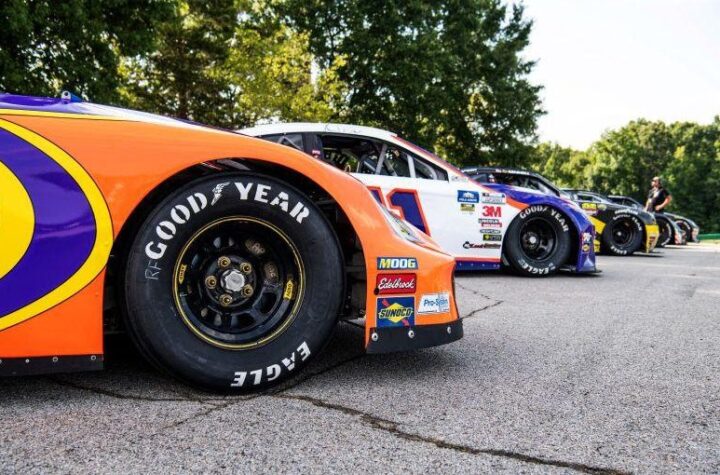
 Each year for the last 10, The Hansen Report on Automotive Electronics has published an analysis of electrical and electronics (E/E) quality, based on Consumer Reports’ annual survey of new car buyers in the United States. In 10 years the average number of E/E problems per carmaker has declined dramatically, from 3.8 problems per 100 vehicles in 1992 down to 1.99 problems per 100 vehicles in 2002. That improvement is all the more spectacular when you consider that each year more and more electrical and electronics content is being installed in vehicles and each year that content becomes more complex.
Each year for the last 10, The Hansen Report on Automotive Electronics has published an analysis of electrical and electronics (E/E) quality, based on Consumer Reports’ annual survey of new car buyers in the United States. In 10 years the average number of E/E problems per carmaker has declined dramatically, from 3.8 problems per 100 vehicles in 1992 down to 1.99 problems per 100 vehicles in 2002. That improvement is all the more spectacular when you consider that each year more and more electrical and electronics content is being installed in vehicles and each year that content becomes more complex.
Over the years Japanese carmakers have produced the best E/E quality by far. In model year 2002, Honda, Mazda, Subaru, Toyota and Nissan were still the best with an average score of 1.1 problems per hundred. Korean carmaker Hyundai matched the Japanese in E/E reliability in 2002, scoring just 1 problem per 100. Lately, U.S.-based carmakers GM, Ford and Chrysler have done second best, averaging 2.4 problems per 100. German carmakers are worst; Mercedes, BMW and Volkswagen averaged 3.5 problems per 100.
In a sense, the German luxury carmakers are handicapped because of their tendency to load up vehicles with E/E features and state-of-the-art electronics technology. With more electronics in the vehicle, more things can go wrong. And German carmakers are often the first to install new technology, for example, they pioneered with multiplexing systems such as LIN and CAN and the fiberoptic D2B and MOST systems, as well as with vehicle control systems such as electronic stability and radar adaptive cruise control.
These days, electronics modules are less of a problem than in the past. More typical are problems with wiring, connectors, actuators and sensors, but even these problems have declined. Often wiring and connector problems are traceable to the assembly process rather than the wiring harness manufacturer. For example, Yazaki, arguably the best electrical distribution system manufacturer in the world, serves many carmakers, some of whom score significantly better than others on E/E quality.
Improvements in E/E quality come from many sources. The Japanese have driven E/E quality standards higher for at least 10 years, especially in the United States. Intense competition among carmakers and throughout the electronics supply chain has not only kept prices low, but has also pushed quality higher. Better engineering, better technology and better processes have all contributed, along with better warranty data and analysis. CAD and software development tools have improved, as has industry acceptance of such tools. With improved materials and design practices, electronics and electrical parts can handle higher temperatures, a requirement for underhood and brake applications. LEDs are replacing less reliable incandescent lights. Even LED headlamps are being seriously considered. Non-contact sensors, which don’t wear out, are also seeing much greater use.
Over the years the global industry has been choosing the best suppliers, regardless of nationality, and has weeded out underperforming companies. That has produced a positive impact on quality. Another promising development is the growing use of contract electronics manufacturers like Solectron, Flextronics and Jabil Circuit, who specialize in high-quality manufacturing services and engineering.
Still there are big quality challenges ahead. Vehicle control systems are becoming more interdependent as systems are integrated and sensors shared. Adding to this complexity, multiple interconnected communications buses are being applied to typical vehicles. Software use is on the rise, as is software complexity. Complex software systems are nearly impossible to design without computer aided software engineering tools, which can be quite expensive and difficult to integrate with existing tools. Some carmakers have been reluctant to upset the status quo, and some engineers have resisted changing their processes and the way they are organized. Despite these major challenges, E/E quality will continue to improve with each model year.
Paul Hansen is a strategy consultant in Portsmouth, New Hampshire. He publishes The Hansen Report on Automotive Electronics, a business and technology newsletter.
www.hansenreport.com.











More Stories
Buying Car Insurance in Toronto? Don’t Make These Rookie Mistakes
Extend Your Range, Maximize Your Storage with FRDM’s 45 Gallon Combo
How to Install a Ford Bumper Yourself (Step-by-Step Guide)